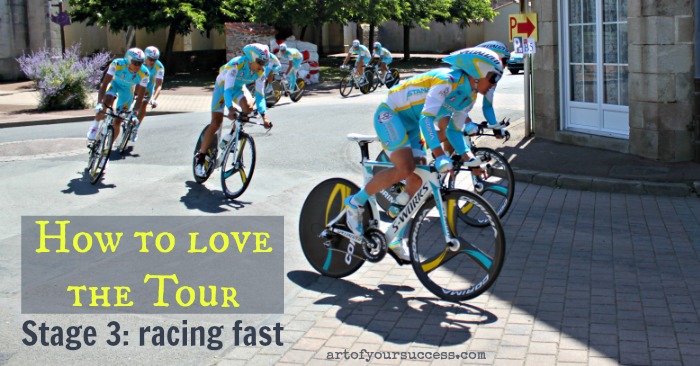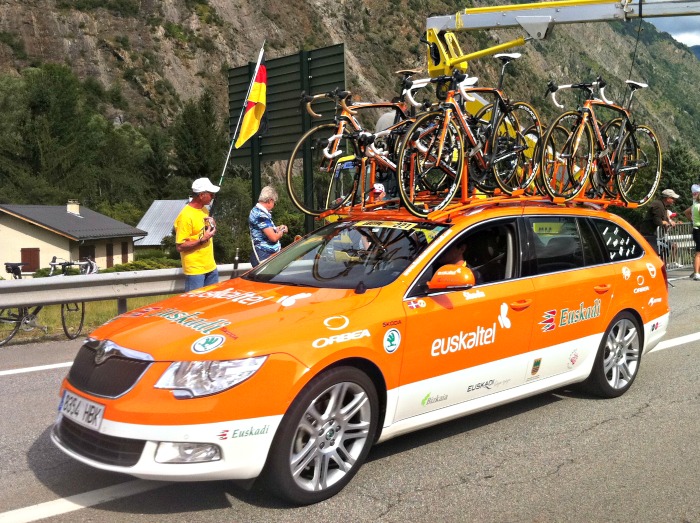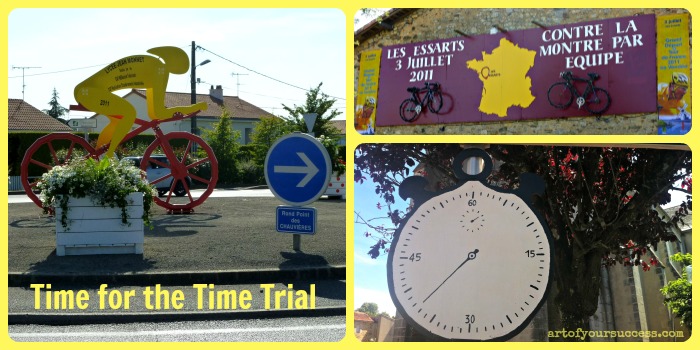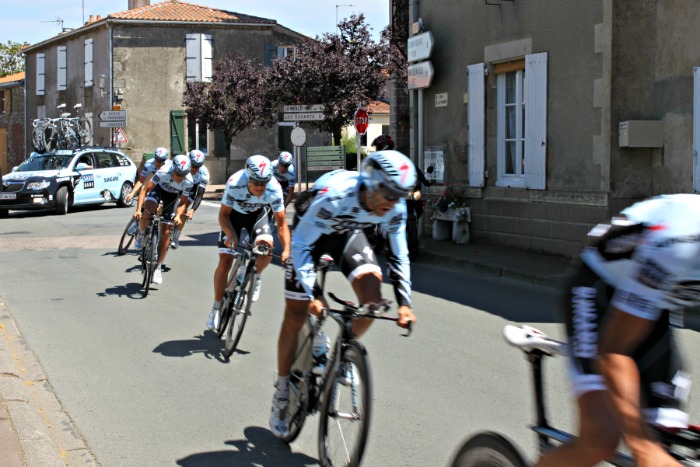
How teams work + time trials, lead-out trains & crashes
So now we know about the different competitions for the jerseys & how racing works , it’s time to look at how the Tour riders do their fastest racing.
Who’s in a team?
There are 22 teams of nine riders (that’s 198 total men on bikes if your maths is good!) Each has a leader (think Bradley in 2012, followed by Chris Froome, for Sky), with the rest acting as ‘domestiques’ (servants) supporting the leader in the team’s aim, which could be stage wins, or going for the general classification. (If you need help spotting them, the team leaders’ numbers often end in a 1).
Cycling is unusual in that the domestiques act selflessly for their leader. (This explains why Chris Froome supported Bradley Wiggins for Sky when many thought Froome could have gone for the win). Things they’ll do include giving the leader their own bike if the leader has a problem; pacing the leader back to the peloton if they’ve stopped for a repair; collecting drinks from the team car; pacing the leader through the mountains so he’s best-placed for a strong sprint finish.
You can’t fail to spot the team cars following the riders round the course with bikes on the roof. The team director ‘directeur sportif’ gives the riders instructions through radio earpieces (and you sometimes get to see some great videos of them shouting/ celebrating from inside the car). The team car also provides water and can give mechanical help and replace bikes if needed during the race.
Time Trial
Individual
Also abbreviated to ‘ITT’. I love the French term ‘contre la montre’ (against the watch), and if you want to get really French, then you can call it ‘the race of truth’ ie there is nowhere for the riders to hide – just the individual against the clock.
The ITT course is shorter than normal stages – usually 40 or 50km. As with other stages, the time is added to the rider’s overall time. So riders use time trial bikes and aerodynamic kit to go as fast as possible. There’s always good discussion in the commentary about what new technology and set-ups teams are using to try and shave off a few seconds. There are two Individual Time Trials in the 2021 Tour.
Team time trial
As for the individual, except the team ride together, with their time recorded when its 5th rider crosses the finishing line. They aren’t held every year, and there isn’t one for 2021.
Lead-out trains
Remember how drafting protects a rider’s energy? Teams with sprints often create ‘lead-out trains’ running up to an intermediate sprint or stage finish, setting up their sprinter to break out at the last minute for the win. Cavendish is the obvious example of a sprinter set up by his team to do this and win sprint points.
Crash
These quite often happen in the early stages of the tour when nerves are high. While no-one wants to crash, the yellow jersey contenders and team leaders want to be particularly careful, and this is why they often like to ride at the front of the peloton.
It’s particularly agonising when there’s a big crash near the finish of a stage, as the riders have made it so far. So since 2005, the rule has been that if riders fall in the last 3 kilometres of a stage, they’re given the same finishing time as the group they were in. (This doesn’t apply in time-trials or on stages that finish on summits).
So you’re getting pretty pro now – read on for stage 4 on top Tour trivia – getting you to advanced level TdF understanding with fun facts like the lanterne rouge & grand boucle direction – come back to find out more, impress your friends, maybe even win your local pub quiz…
Show your support for the Tour in a TdF-inspired t-shirt.
Recap all the How to love the Tour posts:




[…] Next étape we learn more about racing: team make-up, lead-out trains, time trials and crashes… […]